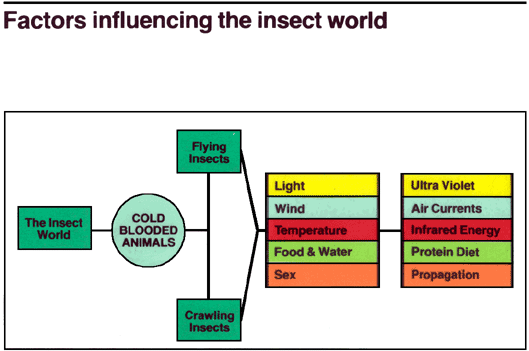|
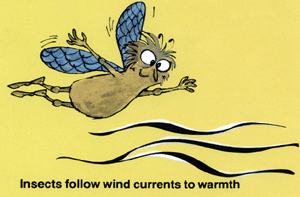
Insects follow wind currents to warmth
|
WIND: Insects are lightweight, and most have trouble with winds in excess of three or four miles per hour. Sometimes they will ride the wind and other times travel up-wind from a signal received from a warm environment, food source, or an attraction from the opposite sex. Wind currents carry them higher than they would normally fly. For instance, we've encountered swarms of insects from 5,00 to 8,00 feet as evidenced by the "splat" on our airplane
windshield. Variations in plant air pressure also have the effect of moving insects from place to place. |
|
|
All light attracts insects...
some more than others
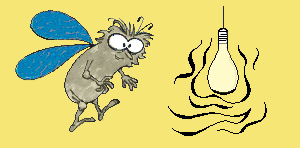
|
LIGHT: Everyone knows the old refrain about the moth drawn to the flame. But why? Is it because of the light, the warmth of the flame, or the energy emitted by the light? It's likely a bit of all three. But regardless...understanding light and its effect on the habits and movement of insects goes a long way toward understanding how to control them |
|
|
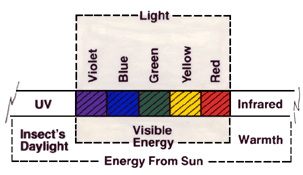
|
Any light source has a few basic characteristics. White light-the light you and I see-is a composite of several colors. A source of light (energy) humans can't see is ultraviolet which is below our visual spectrum, and infrared, which is above. For whatever reason; whether in search of light, energy or warmth-insects react to light and variations of light in a predictable way, and this can be used to control them. |
|
|
.TEMPERATURE: Remember, insects are cold blooded. They don't have the capacity, as we do, to generate body heat. Accordingly, they'll seek out a heat source when it gets too cold (only 72¡F) or too hot (92¡F). When congregate around parking lots or over the surface of highways after dark, it's because the dissipation of heat stored by the pavement or the bricks and
mortar during daylight hours. Long before the word became popular, insects were relying on solar heat. Flyers have a well-tune sense for finding heat to warm their bodies when it gets too cold, and are always seeking an environment with a
comfortable temperature.
|
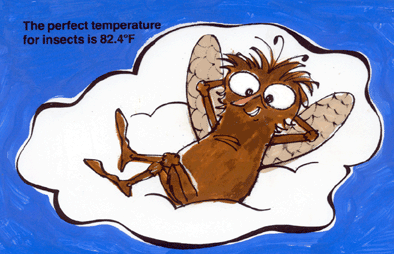
|
|
|
.FOOD AND WATER: Like all creatures, insects must have food and water to survive and to propagate. Their senses for detecting food and water are marvelously well developed. Not only will insects seek out food and water, but flies, particularly, will establish breeding grounds right on top of any source they find. That's way the grounds around dumpsters, garbage bins and other areas where refuse is stored and handled become the chief hatcheries for a plants fly population. Railroad beds are special offenders. With food laden cars passing regularly over the railroad, inevitably dropping bits and pieces of their loads, the railroad beds become the closest thing to heaven on earth for many insects...especially flies.
|
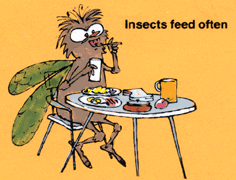
|
|
|
.SEX: It's not surprising that creatures capable of reproducing themselves, billions of times over, have a well developed ability to satisfy their sex drive. There is strong evidence that sex odor, drifting on the wind, will be another primary reason insects travel and/or congregate.
|
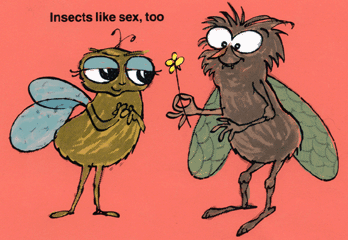
|
|
